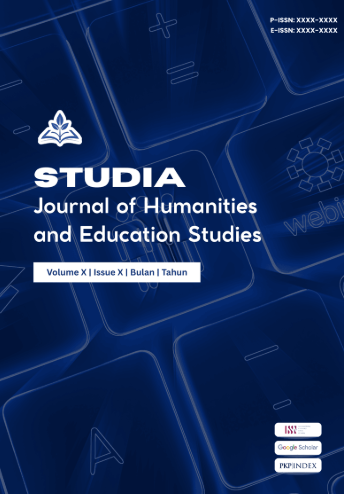Speech Act Analysis in the Short Story Bersiap Kecewa Bersedih Tanpa Kata-Kata
Keywords:
Locutionary Speech Acts, Illocutionary Speech Acts, Perlocutionary Speech Acts, The Short Story, FilmAbstract
In literary works, language is employed by authors as a medium to articulate ideas and thoughts, thereby creating interactions among characters that give rise to speech acts. This study examines the forms of locutionary, illocutionary, and perlocutionary speech acts found in Putu Wijaya’s short story Bersiap Kecewa Bersedih Tanpa Kata-Kata. The objective of this research is to describe the manifestations of speech acts based on the categories of locution, illocution, and perlocution as reflected in the short story. The research adopts a descriptive qualitative method. Data were collected using attentive listening, comprehension, and note-taking techniques. The findings indicate the presence of three types of speech acts: (1) locutionary speech acts, which involve stating something, encompassing declarative, interrogative, and imperative forms; (2) illocutionary speech acts, which involve performing an action through the force of utterance, comprising assertive, directive, expressive, commissive, and declarative types; and (3) perlocutionary speech acts, which influence the feelings, thoughts, and actions of the interlocutor
Downloads
References
Anggraini, D. 2020. Variasi Tindak Tutur Dalam Cerpen ‘Pispot’ Karya Hamsad Rangkuti. Jubindo: Jurnal Ilmu Pendidikan Bahasa Dan Sastra Indonesia, 5(2), 111-119.
Austin, J.L. 1962. How To Do Things With Words. Oxford: Oxford University Press.
Brown, P., & Levinson, S. C. (1987). Politeness: Some universals in language usage. Cambridge University Press.
Chaer, Abdul, dan Agurtina Leonie. 2004. Sosiolinguistik : Perkenalan Awal. Jakarta : Rineke Cipta.
Crystal, D. (2008). A dictionary of linguistics and phonetics (6th ed.). Blackwell Publishing.
Cutting, J. (2015). Pragmatics: A resource book for students (3rd ed.). Routledge.
Fitriah, F., & Fitriani, S. S. 2017. Analisis Tindak Tutur dalam Novel Marwah di Ujung Bara Karya RH Fitriadi. Master Bahasa, 5(1), 51-62.
Gamgulu, N. 2015. Analisis Tindak Tutur Dalam Novel Ayat-Ayat Cinta Karya Habiburrahman El Shirazy. Jurnal Elektronik Fakultas Sastra Universitas Sam Ratulangi, 3(2).
Khusnul Khotimah, S. S. 2019. Tindak Lokusi, Ilokusi, dan Perlokusi Dalam Cerpen “Tak Bisa Dipisahkan” Karya W.S Rendra Kajian Pragmatik.
Leech, G. 1993. Prinsip-Prinsip Pragmatik. Jakarta: Penerbit Universitas Indonesia (UI-PRESS)
Levinson, S. C. (1983). Pragmatics. Cambridge University Press.
Mey, J. L. (2001). Pragmatics: An introduction (2nd ed.). Blackwell.
Saifudin, A. 2019. Teori tindak tutur dalam studi linguistik pragmatik. Lite: Jurnal Bahasa, Sastra, dan Budaya, 15(1), 1-16.
Searle, J. R. (1969). Speech acts: An essay in the philosophy of language. Cambridge University Press.
Searle, J. R. (1979). Expression and meaning: Studies in the theory of speech acts. Cambridge University Press.
Sumarsono. 2013. Sosiolinguistik. Yogyakarta : Pustaka Pelajar.
Thomas, J. (1995). Meaning in interaction: An introduction to pragmatics. Routledge.
Verschueren, J. (1999). Understanding pragmatics. Edward Arnold.
Yule, G. (2020). Pragmatics (3rd ed.). Oxford University Press.
Yuliantoro, A. 2020. Analisis Pragmatik. Klaten: UNWIDHA Press
Downloads
Published
Issue
Section
License
Copyright (c) 2025 Syalaisha Renaisse Fathiha (Author)

This work is licensed under a Creative Commons Attribution-ShareAlike 4.0 International License.













